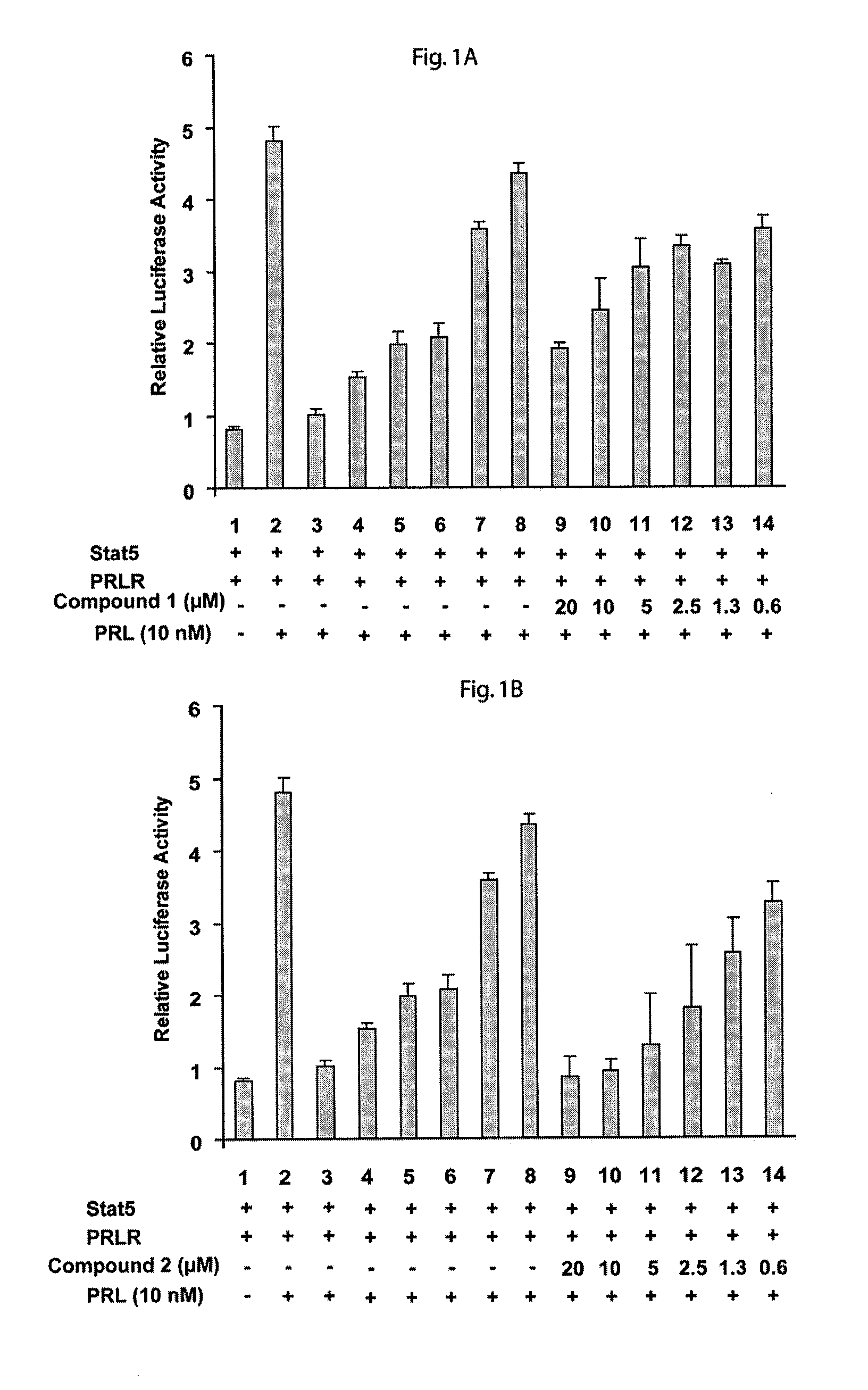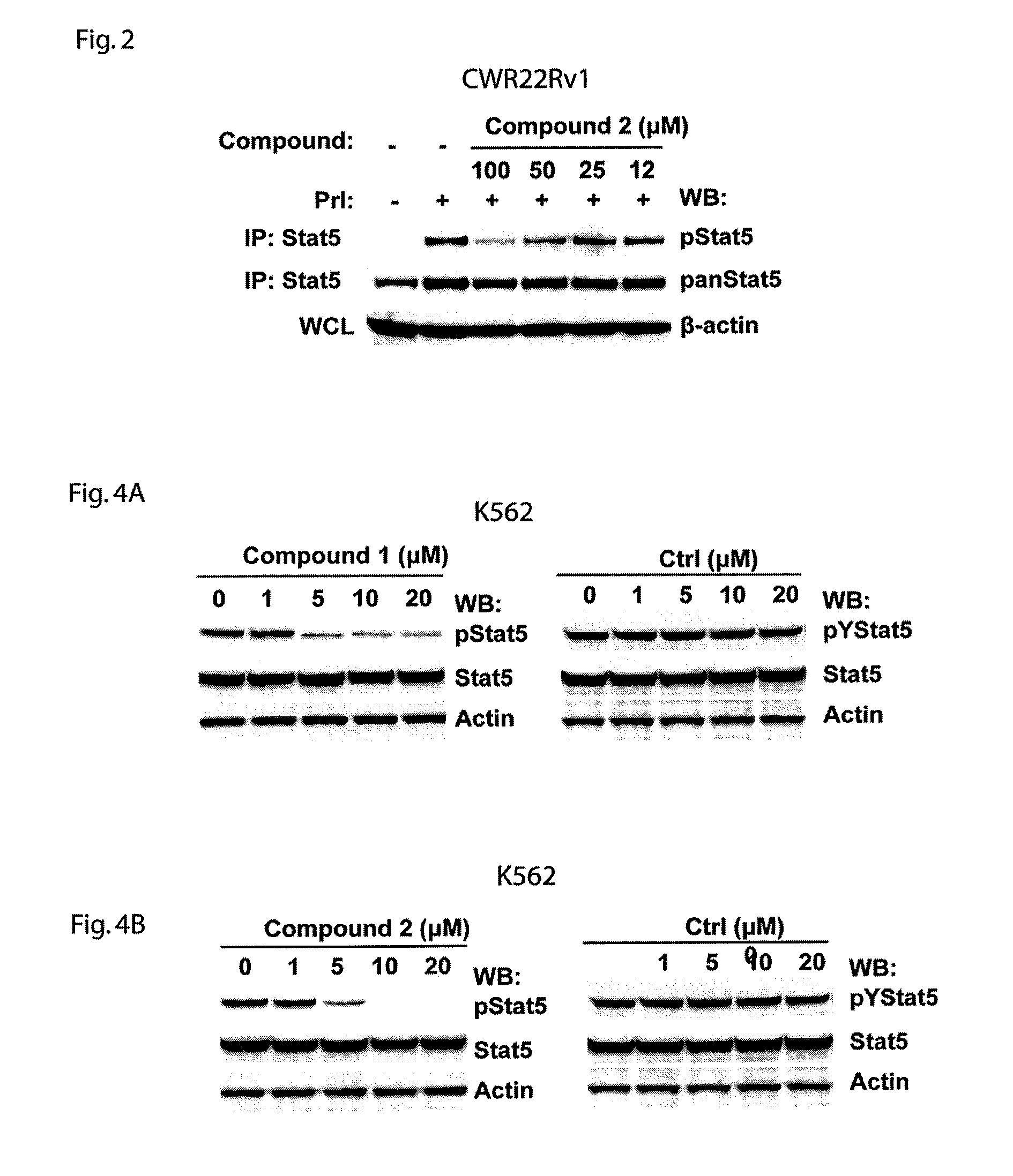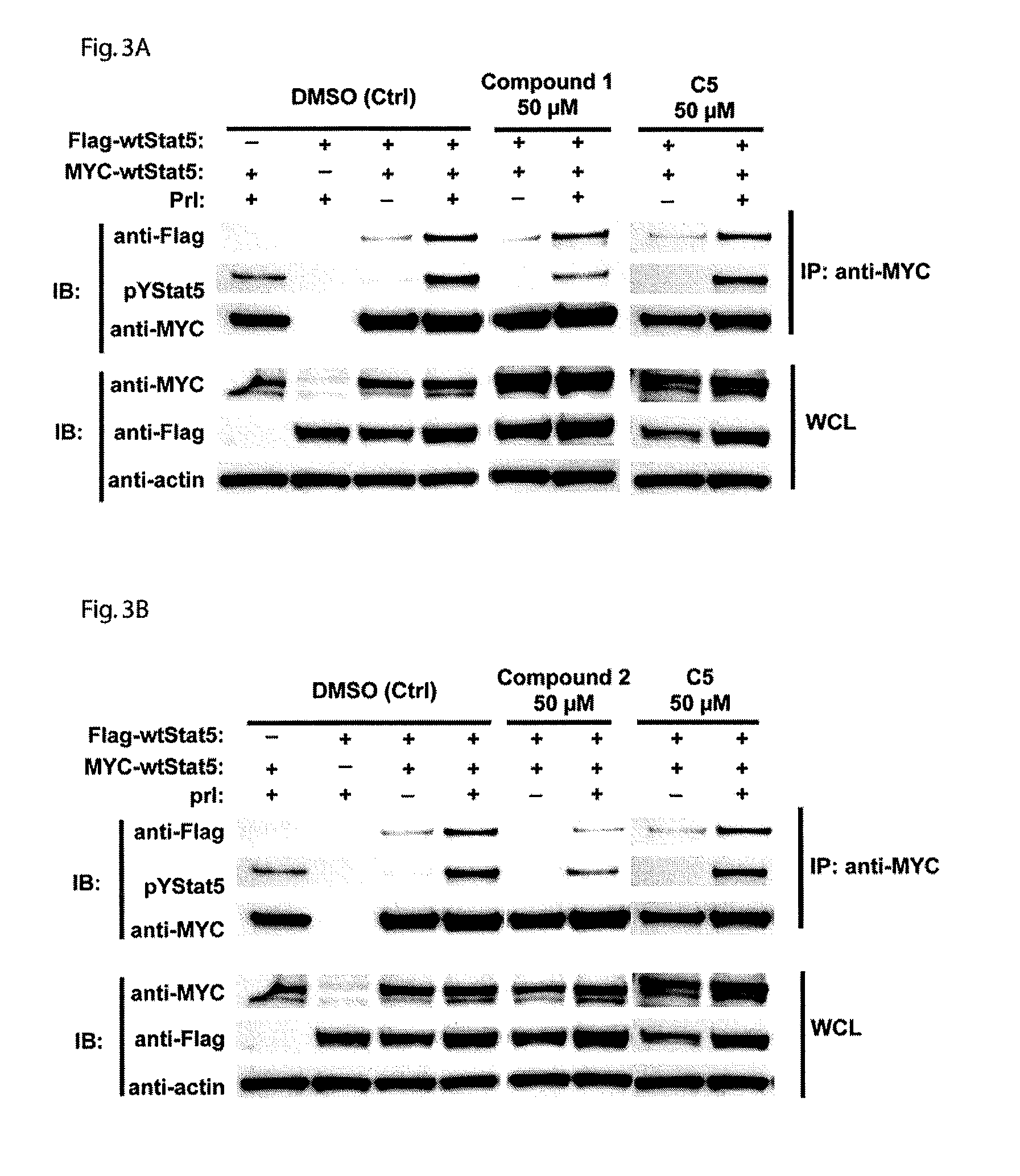Treatment of prostate cancer and hematologic neoplasms
a prostate cancer and hematologic neoplasm technology, applied in the field of prostate cancer and hematologic neoplasms, can solve the problems of limited response time to hormonal therapy, no effective pharmacological therapy for advanced prostate cancer, and resistance in the target cell
- Summary
- Abstract
- Description
- Claims
- Application Information
AI Technical Summary
Benefits of technology
Problems solved by technology
Method used
Image
Examples
example 1
Synthesis of (2R,3R,4S,5R)-2-(6-(3,4-Dihydroisoquinolin-2(1H)-yl)-9H-purin-9-yl)-5-(hydroxymethyl)tetrahydrofuran-3,4-diol (Compound 1)
[0122]1,2,3,4-Tetrahydro-isoquinoline (60 mg, 0.45 mmol, Aldrich), 6-chloropurine-9-β-D-ribofuranoside (100 mg, 0.35 mmol, Aldrich), diisopropylethylamine (193 μL, 1.05 mmol), and dimethylformamide (1 mL) were combined in a microwave tube (5 mL). The reaction was irradiated 15 minutes at 90° C. in the microwave. After cooling the reaction was filtered and then purified using reverse phase chromatography (gradient from 10% acetonitrile to 90% acetonitrile / water—both solvents containing 0.1% TFA). The appropriate fractions were combined and lyophilized to yield the title compound (70 mg, 52% yield. MS(ES+)=384(MH)+.
example 2
Synthesis of (2R,3S,4R,5R)-2-(hydroxymethyl)-5-(6-(2-phenylhydrazinyl)-9H-purin-9-yl)tetrahydrofuran-3,4-diol (Compound 2)
[0123]Phenyl hydrazine (49 mg, 0.45 mmol, Aldrich), 6-chloropurine-9-β-D-ribofuranoside (100 mg, 0.35 mmol, Aldrich), diisopropylethylamine (193 μL, 1.05 mmol), and dimethylformamide (1 mL) were combined in a microwave tube (5 mL). The reaction was irradiated 15 minutes at 90° C. in the microwave. After cooling the reaction was filtered and then purified using reverse phase chromatography (gradient from 10% acetonitrile to 90% acetonitrile / water—both solvents containing 0.1% TFA). The appropriate fractions were combined and lyophilized to yield the title compound (35 mg, 28% yield. MS(ES+)=359 (MH)+.
example 3
Blockade of Stat5a Transcriptional Activity
[0124]Cells of the human prostate cell line PC-3 were plated into 96-well plate at the density of 2×105 per well. After 24 hours of plating, cells were transiently co-transfected using FuGENE6 (Roche) with 0.25 μg of each of pStat5a, pPrlR (prolactin receptor) plasmids, 0.5 μg of pBeta-casein-luc and 0.025 μg of pRL-TK (Renilla luciferase) plasmids as an internal control. After another 24 hours of transfection, the cells were starved in serum-free medium for 8 hours, pretreated with (2R,3R,4S,5R)-2-(6-(3,4-dihydroisoquinolin-2(1H)-yl)-9H-purin-9-yl)-5-(hydroxymethyl)tetrahydrofuran-3,4-diol (Compound 1) or (2R,3S,4R,5R)-2-(hydroxymethyl)-5-(6-(2-phenylhydrazinyl)-9H-purin-9-yl)tetrahydrofuran-3,4-diol (Compound 2), for 1 hour, and then stimulated with 10 nM human prolactin (hPrl) in the serum-free medium for additional 16 hours. The lysates were assayed for firefly and Renilla luciferase activities using the Dual-Luciferase reporter assay s...
PUM
| Property | Measurement | Unit |
|---|---|---|
| Electrical resistance | aaaaa | aaaaa |
| Chemotherapeutic properties | aaaaa | aaaaa |
Abstract
Description
Claims
Application Information
 Login to View More
Login to View More - R&D
- Intellectual Property
- Life Sciences
- Materials
- Tech Scout
- Unparalleled Data Quality
- Higher Quality Content
- 60% Fewer Hallucinations
Browse by: Latest US Patents, China's latest patents, Technical Efficacy Thesaurus, Application Domain, Technology Topic, Popular Technical Reports.
© 2025 PatSnap. All rights reserved.Legal|Privacy policy|Modern Slavery Act Transparency Statement|Sitemap|About US| Contact US: help@patsnap.com



